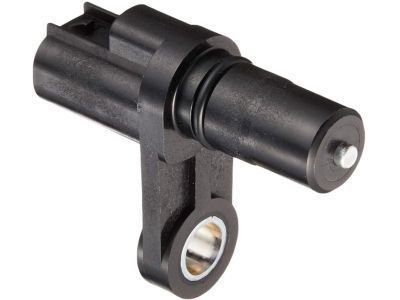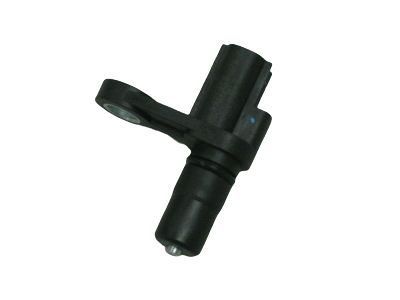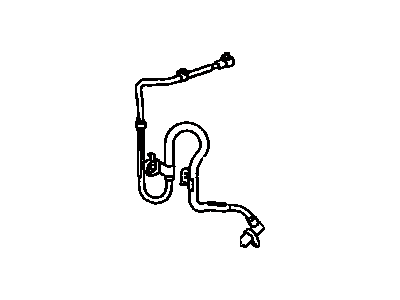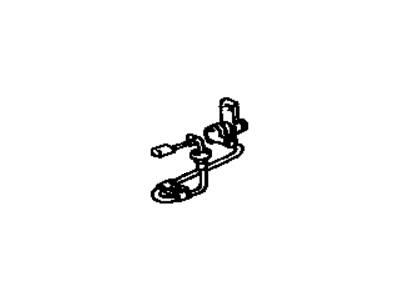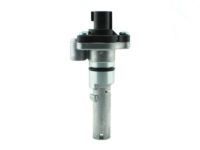×
- Live Chat
- 1-888-905-9199


My Garage
My Account
Cart
Genuine Toyota Celica Speed Sensor
Speed Control Sensor- Select Vehicle by Model
- Select Vehicle by VIN
Select Vehicle by Model
orMake
Model
Year
Select Vehicle by VIN
For the most accurate results, select vehicle by your VIN (Vehicle Identification Number).
37 Speed Sensors found
Toyota Celica Sensor, Speedometer
Part Number: 83181-12020$266.72 MSRP: $382.46You Save: $115.74 (31%)Ships in 1-2 Business DaysToyota Celica Sensor, Transmission Revolution
Part Number: 89413-24010$128.92 MSRP: $183.28You Save: $54.36 (30%)Ships in 1-2 Business DaysToyota Celica Sensor, Speedometer
Part Number: 83181-12040$293.39 MSRP: $420.70You Save: $127.31 (31%)Ships in 1-3 Business DaysToyota Celica Sensor, Transmission Revolution
Part Number: 89413-32010$104.30 MSRP: $147.02You Save: $42.72 (30%)Ships in 1-3 Business DaysToyota Celica Sensor, Speed
Part Number: 89411-33010$128.92 MSRP: $183.28You Save: $54.36 (30%)Ships in 1-3 Business DaysToyota Celica Sensor, Skid Control
Part Number: 89544-32040$181.76 MSRP: $223.87You Save: $42.11 (19%)Ships in 1-3 Business DaysToyota Celica Sensor, Speedometer
Part Number: 83181-12030$293.39 MSRP: $420.70You Save: $127.31 (31%)Ships in 1-3 Business DaysToyota Celica Sensor, Skid Control
Part Number: 89544-20010$181.76 MSRP: $223.87You Save: $42.11 (19%)Ships in 1-3 Business DaysToyota Celica Sensor, Speed, Front RH
Part Number: 89542-20140$262.61 MSRP: $376.57You Save: $113.96 (31%)Ships in 1-3 Business DaysToyota Celica Sensor, Speed, Front LH
Part Number: 89543-20140$262.61 MSRP: $376.56You Save: $113.95 (31%)Ships in 1-3 Business DaysToyota Celica Sensor, Skid Control
Part Number: 89544-32030$181.76 MSRP: $223.87You Save: $42.11 (19%)Ships in 1-3 Business DaysToyota Celica Sensor, Speed, Rear RH
Part Number: 89545-20120$256.58 MSRP: $367.91You Save: $111.33 (31%)Ships in 1-3 Business DaysToyota Celica Sensor, Speed
Part Number: 89411-30080$110.08 MSRP: $156.78You Save: $46.70 (30%)Ships in 1-3 Business DaysToyota Celica Sensor, Skid Control
Part Number: 89544-47010$181.76 MSRP: $223.87You Save: $42.11 (19%)Ships in 1-3 Business Days
| Page 1 of 2 |Next >
1-20 of 37 Results
Toyota Celica Speed Sensor
If you are in demand for superior quality and affordable OEM Toyota Celica Speed Sensor, then shop with us! We own a wide range of the reduced-priced genuine Toyota Celica Speed Sensor. You can purchase in confidence as all parts come with a manufacturer's warranty. Any issues with our products? No need to worry as we have a hassle-free return policy to guide you every step of the way.
Toyota Celica Speed Sensor Parts Questions & Experts Answers
- Q: What are the functions, locations, and diagnostic procedures for Coolant Temperature Sensor,Crankshaft Position Sensor,Intake Manifold Temperature Sensor,Mass Air Flow Sensor,Oxygen Sensor and Speed Sensor on Toyota Celica?A: Almost all components are under a Federally required three-year / 36,000-mile warranty, and as a result, it's nearly impossible to test or swap them to check the effectiveness of the warranty. As you can see, it may be cheaper to do the checks or replacements once the free warranty has been used up. The oxygen sensor of the STL type, installed in the exhaust manifold, sensors the concentration of oxygen in the gases; the second sensor checks the emission level in the catalytic converter. An open or shorted oxygen circuit will endorse a code 21 or 27. The coolant temperature sensor, a thermistor in the thermostat housing or behind the distributor, will set code 22 if it goes bad. To confirm it, disconnect the connector, take resistance between terminals and if not at the right range replace it with a new one and solder it with Teflon tape or thread sealant. The intake AIR temperature sensor which is located in the air cleaner housing monitors the temperature of air entering intake manifold, consequently controls the fuel and sets a code 24 if the sensor is faulty. Diagnosis is something that should be conducted by the dealer. Air volume for fuel delivery control is measured by the air flow meter near the air cleaner, which may set a code 31 if faulty, and the diagnosis is suggested to be handled by a dealer. The vacuum sensor measures changes in intake manifold pressure converting them into voltage in the fuel delivery and ignition timing the code 31 also sets if it fails, in which case the vacuum sensor needs to be replaced if found faulty. This is located on the throttle body and assists the ECM calculate the fuel delivery that is proportional to the throttle angle; if this sets a code 41, it will require the help of the dealer or replacement. The transaxle position switch located on POS and NEU also affects the fuel injectors as well as the ISC solenoid valve on automatic transaxles. If A/C amplifier is absent, it puts out a code 51 and the dealer needs to diagnose when it signals the ECM that A/C is on and permits adjustments for load on the engine. The speedometer with VSS is the one that produces a pulsing voltage signal to the ECM to facilitate the display of speed, with a code 42 set if it is not available, and diagnosis recommended at the dealer. The distributor produces crank angle pulse signal for calculating the engine speed of the vehicle in turn control the speed. Cranking is informed to the ECM by the engine start signal from the starter circuit, while, pertaining to fuel injectors, code 43 is set if missing or is intermittent.
Related Toyota Celica Parts
Browse by Year
2005 Speed Sensor 2004 Speed Sensor 2003 Speed Sensor 2002 Speed Sensor 2001 Speed Sensor 2000 Speed Sensor 1999 Speed Sensor 1998 Speed Sensor 1997 Speed Sensor 1996 Speed Sensor 1995 Speed Sensor 1994 Speed Sensor 1993 Speed Sensor 1992 Speed Sensor 1991 Speed Sensor 1990 Speed Sensor 1989 Speed Sensor 1988 Speed Sensor 1987 Speed Sensor 1986 Speed Sensor 1985 Speed Sensor 1984 Speed Sensor 1983 Speed Sensor 1982 Speed Sensor

